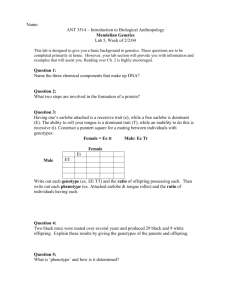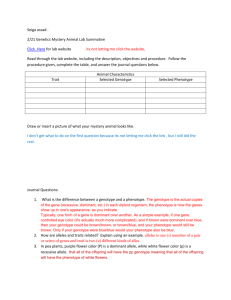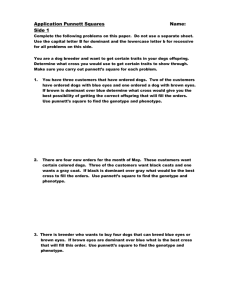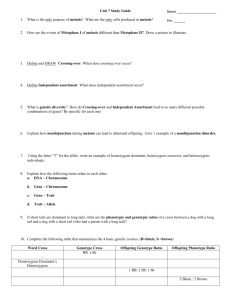Review for Mendelian Genetics Test
advertisement
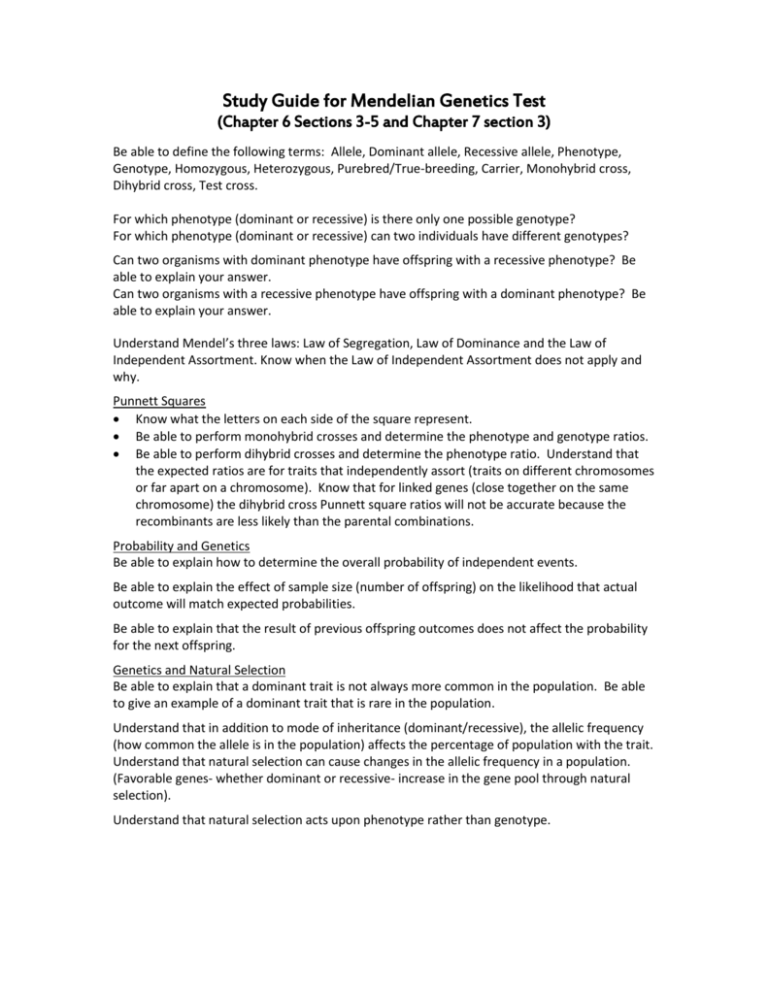
Study Guide for Mendelian Genetics Test (Chapter 6 Sections 3-5 and Chapter 7 section 3) Be able to define the following terms: Allele, Dominant allele, Recessive allele, Phenotype, Genotype, Homozygous, Heterozygous, Purebred/True-breeding, Carrier, Monohybrid cross, Dihybrid cross, Test cross. For which phenotype (dominant or recessive) is there only one possible genotype? For which phenotype (dominant or recessive) can two individuals have different genotypes? Can two organisms with dominant phenotype have offspring with a recessive phenotype? Be able to explain your answer. Can two organisms with a recessive phenotype have offspring with a dominant phenotype? Be able to explain your answer. Understand Mendel’s three laws: Law of Segregation, Law of Dominance and the Law of Independent Assortment. Know when the Law of Independent Assortment does not apply and why. Punnett Squares Know what the letters on each side of the square represent. Be able to perform monohybrid crosses and determine the phenotype and genotype ratios. Be able to perform dihybrid crosses and determine the phenotype ratio. Understand that the expected ratios are for traits that independently assort (traits on different chromosomes or far apart on a chromosome). Know that for linked genes (close together on the same chromosome) the dihybrid cross Punnett square ratios will not be accurate because the recombinants are less likely than the parental combinations. Probability and Genetics Be able to explain how to determine the overall probability of independent events. Be able to explain the effect of sample size (number of offspring) on the likelihood that actual outcome will match expected probabilities. Be able to explain that the result of previous offspring outcomes does not affect the probability for the next offspring. Genetics and Natural Selection Be able to explain that a dominant trait is not always more common in the population. Be able to give an example of a dominant trait that is rare in the population. Understand that in addition to mode of inheritance (dominant/recessive), the allelic frequency (how common the allele is in the population) affects the percentage of population with the trait. Understand that natural selection can cause changes in the allelic frequency in a population. (Favorable genes- whether dominant or recessive- increase in the gene pool through natural selection). Understand that natural selection acts upon phenotype rather than genotype. Check for Understanding- Analyzing Mendel’s experiments: The basic pattern of Mendel’s experiments with pea plants: His parental strains were purebreds. Example: True-breeding Tall x True-breeding Short Be able to explain that purebreds always have homozygous genotypes. In the F1 (first offspring generation), all of the offspring had same phenotype. Example: The F1 generation for height was all tall. Be able to explain why and be able to give genotype of F1 offspring. In the F2 generation the form of the trait that had not been present in the F1 reappeared and represented 25% of the F2 offspring. Example: F2 generation were 3 Tall : 1 short Be able to explain why the trait reappeared, and why this ratio. Mendel’s Experiment:

